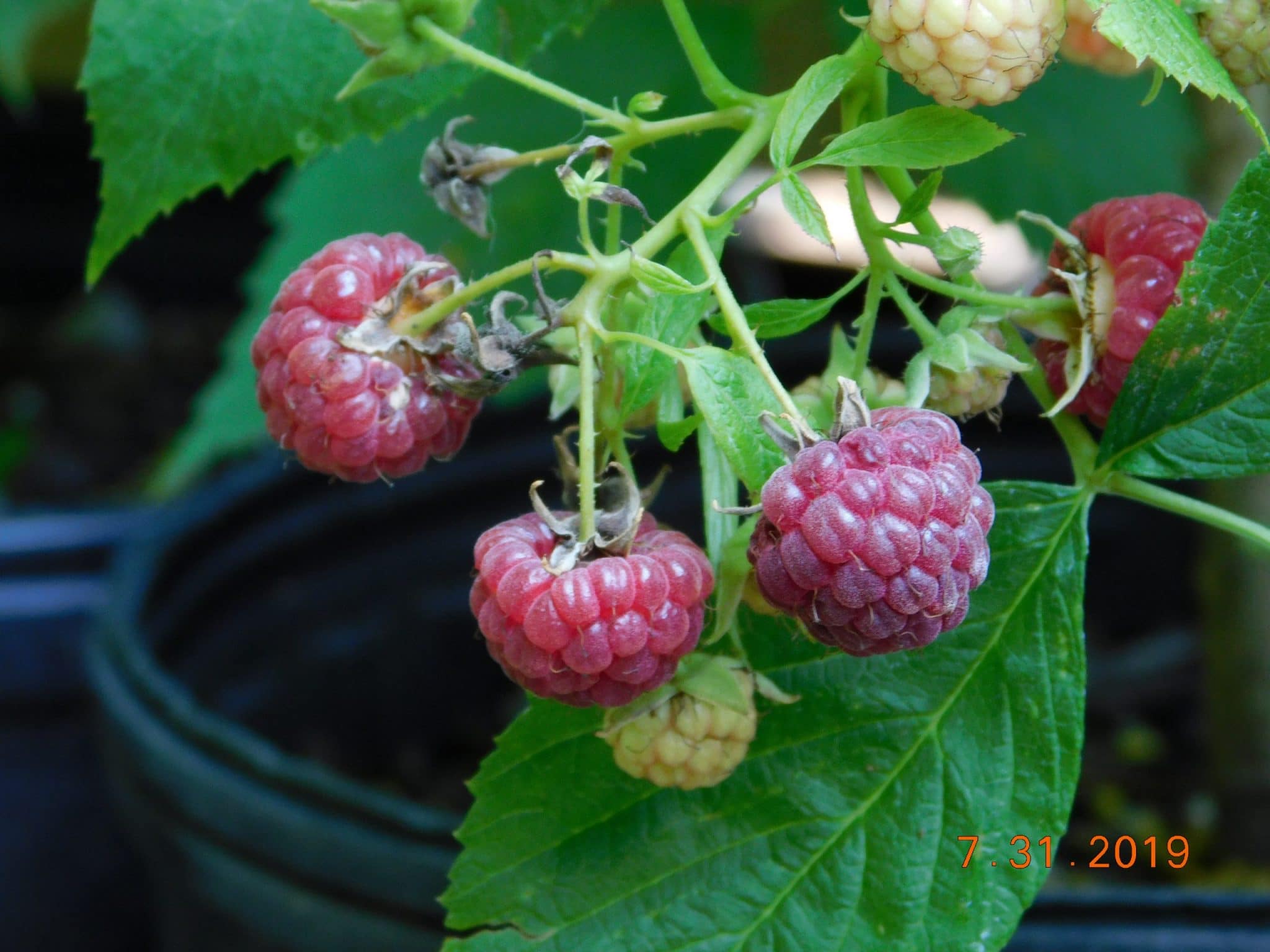Edibles You Grow Yourself
Edibles You Grow Yourself
More and more people are getting fed up with buying fruits that have been grown somewhere they’ve never heard of. They’ve been treated with all kinds of chemicals. Freshness becomes a relative term.
We have several selections of edibles that you can actually grow in your own yard. Some of them can even be grown in your front yard. Just watch for that neighbor that sneaks over for a fresh bite or two.
Blueberries, Blackberries, Raspberries, Grapes, and even Figs. These plants are propagated and grown right here. These are all hardy for this area so you can enjoy success in your yard.
Also, keep your eyes open for some new additions to the inventory. I am always looking for varieties to add. Another thing that gets added in sometimes is fruit trees.
Some of the Edibles we may have available here are:
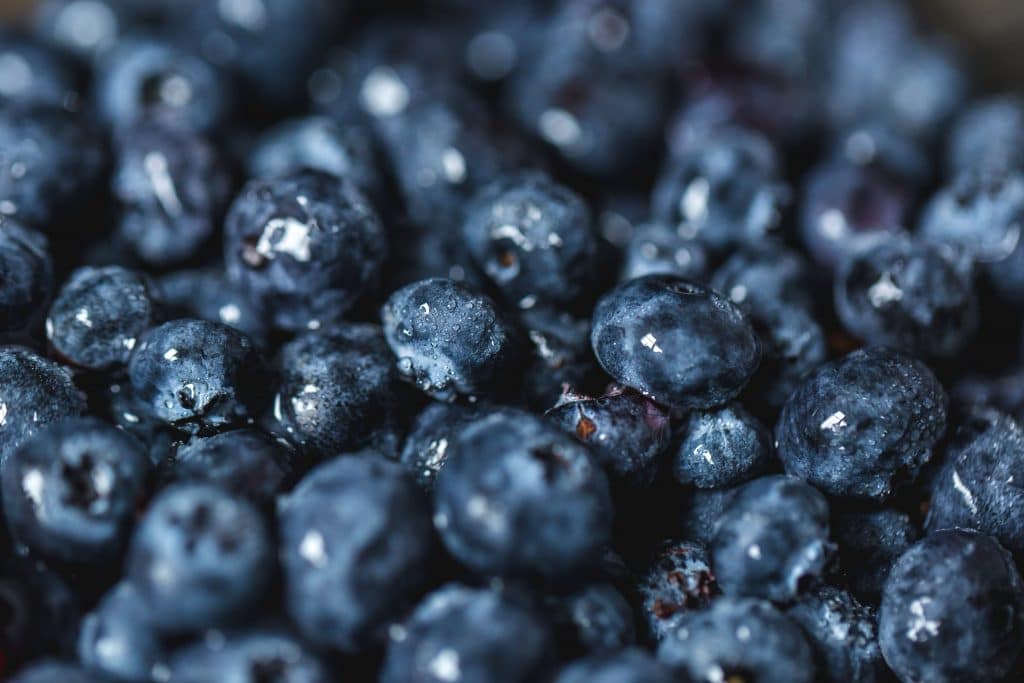 Fresh blueberries
Fresh blueberries
Blueberries
Bluecrop
Vaccinium corymbosum ‘Bluecrop’
5′ to 7′ high and 5′ to 7′ wide.
Full sun
A mid-season berry that produces large crops. Very crack and disease resistant. Self-pollinating, but will do better with a cross-pollinator. Fall colors are shades of red.
Duke
Vaccinium corymbosum ‘Duke’
5′ to 7′ high and 5′ to 7′ wide.
Full sun
Late-blooming but early-season berry that produces large sweet berries. Self-pollinating, but will do better with cross-pollinator. Fall colors are yellows and orange.
Jersey
Vaccinium corymbosum ‘Jersey’
6′ to 8′ high and 6′ to 8′ wide.
Full sun
Late-season berry that produces smaller sized, light blue berries. Self-pollinating, but will do better with cross-pollinator. Fall colors are attractive shades of red.
Elliott
Vaccinium corymbosum ‘Elliott’
4′ to 6′ high and 4′ to 6′ wide.
Full sun
A very late-season berry that produces smaller sized berries. Self-pollinating, but will do better with cross-pollinator. Fall colors are attractive shades of yellow-orange to reddish-purple.
Triple Crown Blackberry
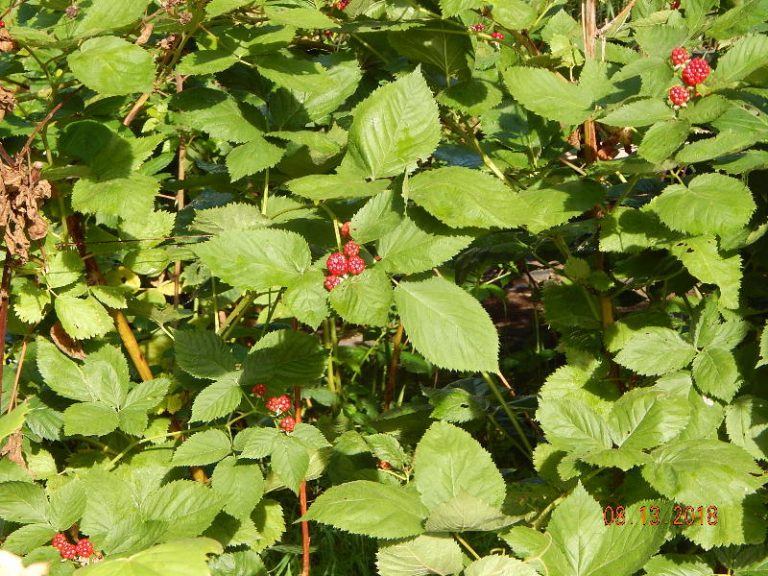 Ripening blackberries
Ripening blackberries
Rubus fruticosus ‘Triple Crown’
3′ to 5′ high and 4′ to 8′ long.
Full sun
Large amounts of big sweet black berries on thornless vines. Best grown on a support trellis or wires. Plant about 4 feet apart to allow for vining growth.
Dewberries
Rubus flagellaris
1′ to 3′ high and 4′ to 8′ long.
Full sun
A very old-time favorite that got left behind because they have to be used fresh. Large sweet black berries on thorny vines. Not easily grown on wires or supports. Best to let it bramble. Plant about 4 feet apart to allow for vining growth.
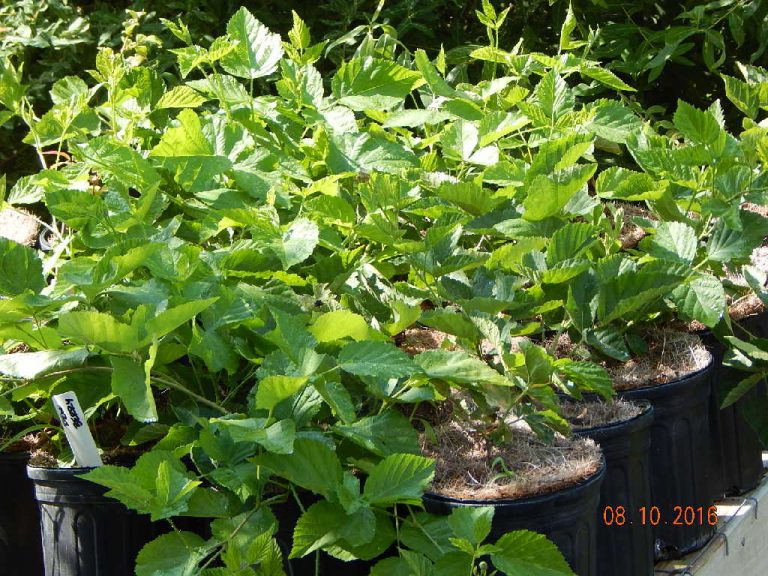 Potted dewberries
Potted dewberries
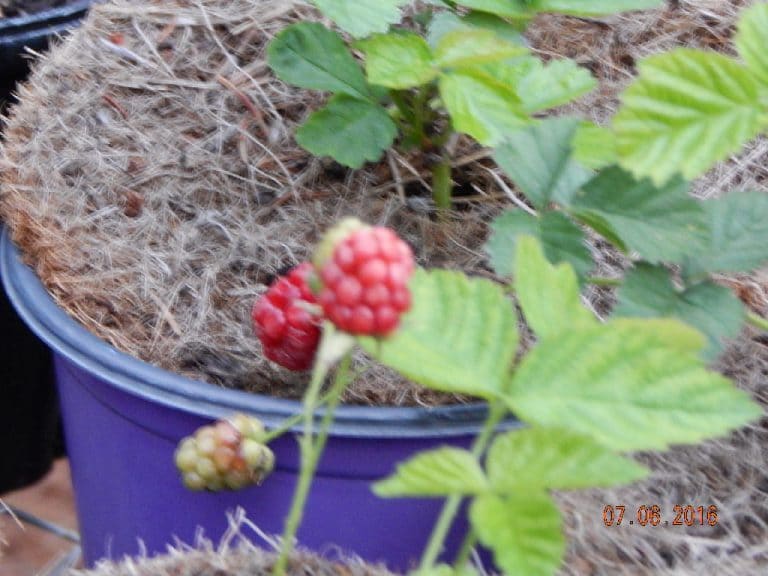 Ripening dewberries
Ripening dewberries
Heritage Red Raspberry
Rubus occidentalis ‘Heritage’
5′ to 6′ high and 4′ to 6′ long.
Full sun
Dark red berries grow on current year canes. A late summer crop can be followed by some more possible in the fall. Canes can be cut down at the end of the year for better growth next year.
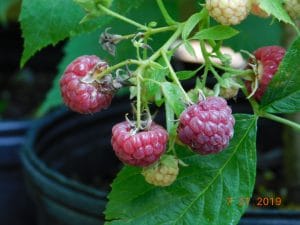
Jewel Black Raspberry
Rubus occidentalis ‘Jewel’
3′ to 4′ high and 3′ to 4′ long.
Full sun
An early summer crop of round black berries grows on last year’s canes. Prune back canes after fruiting for better branching and more berries next season. Cut out canes that have finished producing.
Concord Grape
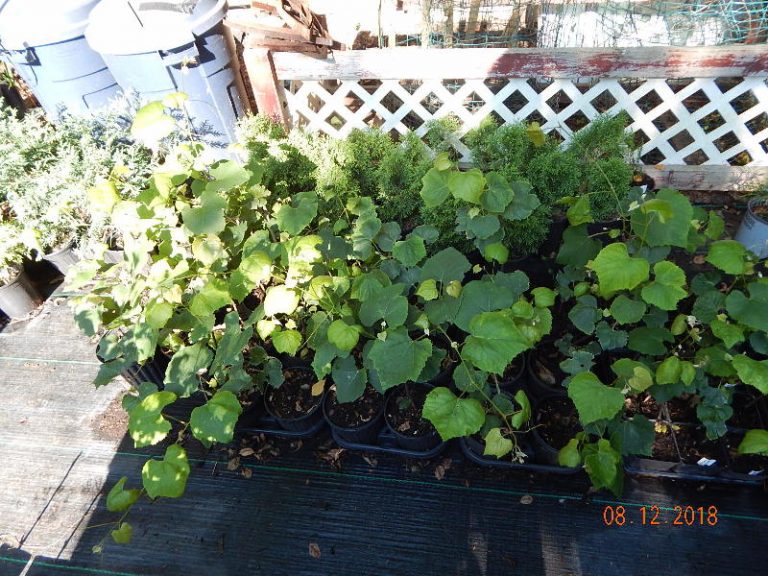 Potted Concord Grapes
Potted Concord Grapes
Vitis labrusca ‘Concord’
3′ to 4′ high and 10′ to 12′ long.
Full sun
Clusters of round purple fruits ripen in early to mid-fall. Very fragrant while ripening. Good for eating, juice, wines, and jelly.
Canadice Grape
Vitis ‘Canadice’
3′ to 4′ high and 10′ to 12′ long.
Full sun
Clusters of round red fruits ripen in late summer to early fall. These are seedless grapes and are good for eating fresh.
Chicago Hardy Fig
Ficus carica ‘Chicago Hardy’
3′ to 4′ high and 3′ to 5′ wide.
Full sun
Stems may suffer from winter die back, but roots will survive. It can grow much larger with no dieback. It will grow from the roots and produce fruit by fall.
Not all of these may be available. There may be others.
Growing your own edibles is becoming big business. Eating healthy has become priority one for many folks. Nothing more flavorful than fruit you have grown yourself.
